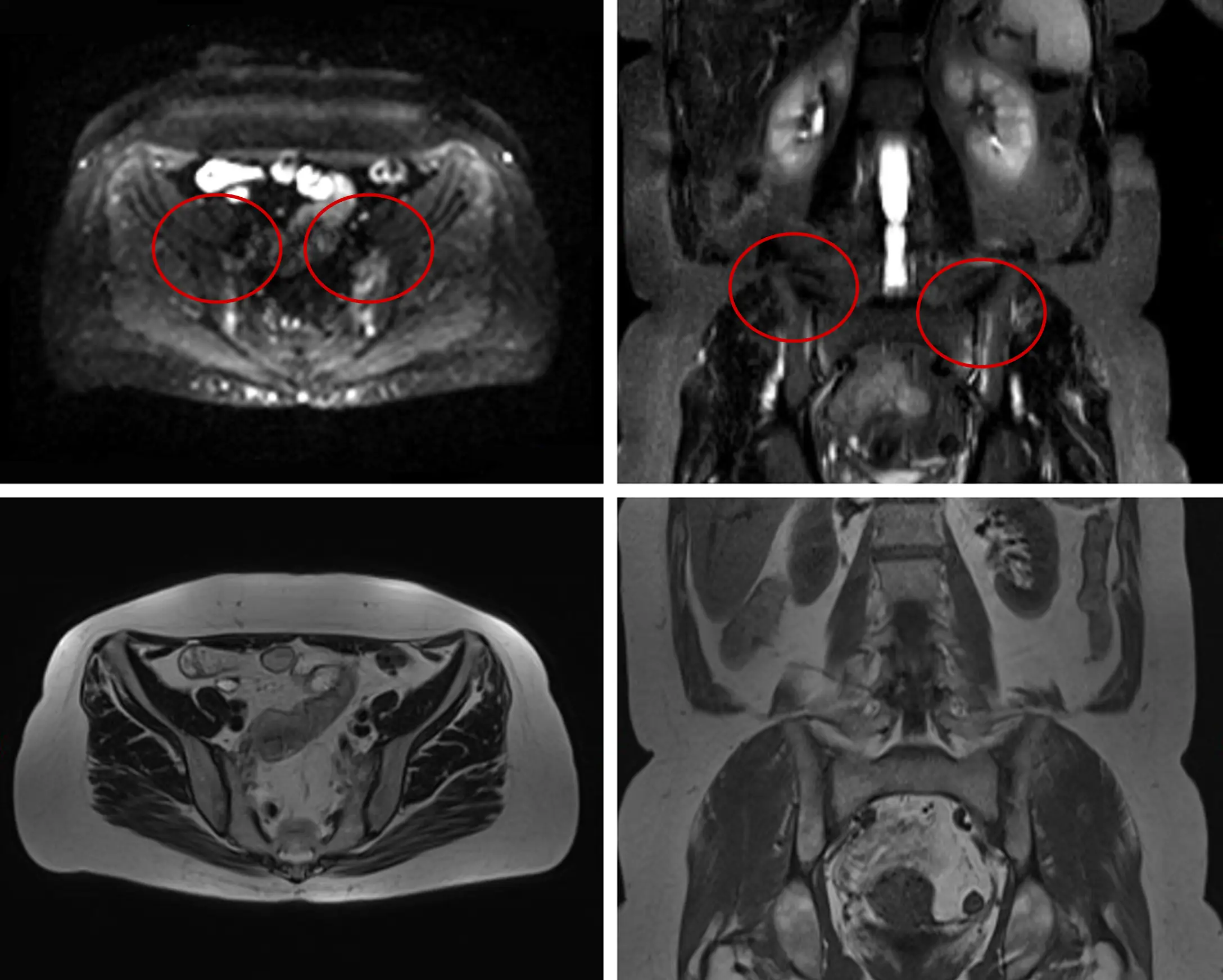Subdural Hematoma

Axial FLAIR brain image showing bilateral subdural collections/hematomas.
Case overview
This case highlights the vital role of whole body MRI (WB-MRI) in early detection of asymptomatic diseases, which can become serious if not treated promptly.
Patient History
- A 72-year-old male came to Prenuvo for a proactive WB-MRI screening after a recent trip.
- He reported no symptoms or specific concerns.
Findings
- Two bilateral subdural hematomas (≤10mm) were found. (Figure 1 and Figure 2)
- No brain herniation or midline shift was noted. An excess of pressure from surrounding fluid can cause unwanted movement of the brain.


Coronal T1-weighted brain image showing bilateral subdural collections/hematomas. Signal characteristics on the right-sided collection suggest acute/subacute components, and the left-sided collection has a more chronic appearance.





Coronal T1-weighted brain image showing bilateral subdural collections/hematomas. Signal characteristics on the right-sided collection suggest acute/subacute components, and the left-sided collection has a more chronic appearance.



Follow-up care
A follow-up driven by neurological concerns showed that the fluid collections were growing larger. The patient promptly underwent two procedures: a burr hole drainage to remove the excess fluid, and a middle meningeal artery embolization to prevent further hematomas. These treatments stabilized the patient’s condition and averted potential life-threatening complications.




How the Prenuvo scan impacted patient care:
- The WB-MRI scan detected two previously unknown subdural hematomas. This condition can silently progress and become serious if not treated. Severe complications such as neurological deficits or brain herniation can occur.
- WB-MRI provided a safe radiation-free alternative to a brain CT scan
- Due to the patient’s asymptomatic presentation, it is unlikely that the traditional healthcare system would have discovered a silent hematoma, thus increasing the risk of a life-threatening outcome.

References
Other case studies

Prostate Cancer

The Visceral Truth: How Advanced Imaging Detected Severe Internal Fat in an Asymptomatic Man
